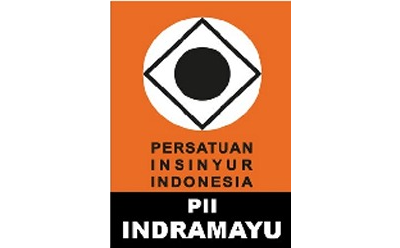EFEK MEDAN ELEKTROMAGNET PADA MESIN BENSIN TERHADAP EMISI GAS BUANG DAN ENERGI PEMBAKARAN
Abstract
Full Text:
PDFReferences
Agathou, M. S., & Kyritsis, D. C. (2012). Electrostatic atomization of hydrocarbon fuels and bio-alcohols for engine applications. Energy Conversion and Management, 60, 10–17. http://doi.org/10.1016/j.enconman.2012.01.019
Chaware, K. (2015). Review on Effect of Fuel Magnetism by Varying Intensity on Performance and Emission of Single Cylinder Four Stroke Diesel Engine. International Journal of Engineering and General Science, 3(1), 1174–1178.
Kementrian Lingkungan Hidup dan Kehutanan. Peraturan Menteri Lingkungan Hidup Dan Kehutanan Republik Indonesia. Nomor P.20/MENLHK/Setjen/Kum.1/3/2017 Tentang Baku Mutu Emisi Gas Buang Kendaraan Bermotor (2017).
Kolhe, A. V, Shelke, R. E., & Khandare, S. S. (2014). Performance , Emission and Combustion Characteristics of a Variable Compression Ratio Diesel Engine Fueled with Karanj Biodiesel and Its Blends. Jordan Journal of Mehanical and INdutrial Engineering, 8(4), 806–813.
Nufus, T. H., Praeko, R., Setiawan, A., & Hermawan, W. (2017). Characterization of biodiesel fuel and its blend after electromagnetic exposure. Cogent Engineering, 75, 1–12. http://doi.org/10.1080/23311916.2017.1362839
Syarifuddin, A., Tony, M. S. K., & Utomo, S. (2016). Performa Dan Emisi Gas Buang Mesin Bensin Dengan Sistem Egr Panas Pada Campuran Bahan Bakar Premium Dan High Purity Methanol. Jurnal Mekanikal, 7(1), 652–661.
Yamaha, 2020. Spesifikasi sepeda motor 4 langkah. Retrieved from https://www.yamaha-motor.co.id/product/mio-m3-125/
Singh AK, Solank RM. 2013, Investigation of fuel saving in annealing lehr through magnetic material fuel sarver, International Journal of Science and Research.6(14): 178-180.
Siregar H, Nainggolan R. 2012. Electromagnetic Fuel Saver for Enhanching The Performance of The Diesel Engine. Global Journal of Research in Engineering Mechanical and Mechanics Engineering. Global Journal Inc (USA). 12(6):1-4.
Subbarayan MR, Kumaar JSS, Padmanaban MRA. 2016. Experimental investigation of evaporation rate and exhaust emissions of diesel engine fuelled with cotton seed methyl ester and its blend with petro-diesel. 48:369-377. doi:10.1016/j.trd.2016.08.024.
Tesfa, Belachew, Gu, Fengshou, Mishra, Rakesh and Ball, Andrew. 2013. LHV Predication Models and LHV Effect on the Performance of CI Engine Running with Biodiesel Blends. Energy Conversion and Management, 71. pp. 217-226. ISSN 0196-8904
Mariaca, A. G. and Castaño, R. M. Anhydrous 2018. Bioethanol gasoline blends at high altitude above sea level in a SI engine. Biofuels. Taylor & Francis. 2018. pp.1759-7269. doi: 10.1080/17597269.2018.1479134.
DOI: https://doi.org/10.31884/jtt.v7i1.308
Refbacks
- There are currently no refbacks.
Copyright (c) 2021 JTT (Jurnal Teknologi Terapan)

This work is licensed under a Creative Commons Attribution-NonCommercial-NoDerivatives 4.0 International License.
 Creative Common Attribution-ShareAlike 4.0 International (CC BY-SA 4.0)
Creative Common Attribution-ShareAlike 4.0 International (CC BY-SA 4.0)














